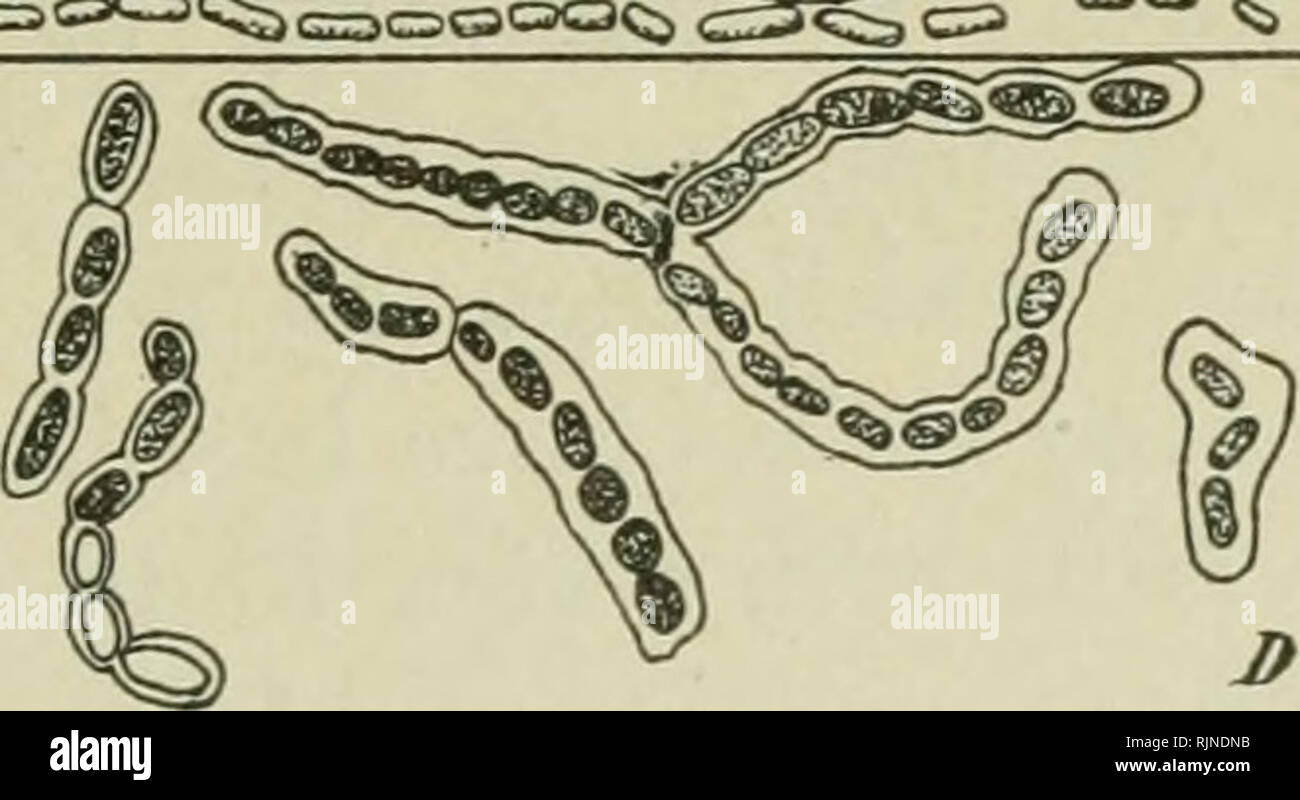. Bacteriological methods in food and drug laboratories, with an introduction to micro-analytical methods. Bacteriology; Food; Drug adulteration. '=^ s 0 00 «^sj^ lo'^'. Fig. 83.—Vinegar organisms. A, Bacterium {Mycoderma) aceti; B, Bacterium pasteurianiis; C, Bacterium kUtzingianum; D, B. pasteurianum, showing the mucilagi- nous sheath. This mucilaginous material causes the cells to stick together in large masses, forming the so-called "mother of vinegar."—(Marshall.) Kentucky and other states. It is evidently of Japanese origin. Kebler and Lloyd made brief reports on this ferment

Image details
Contributor:
Library Book Collection / Alamy Stock PhotoImage ID:
RJNDNBFile size:
7.2 MB (195.1 KB Compressed download)Releases:
Model - no | Property - noDo I need a release?Dimensions:
2138 x 1169 px | 36.2 x 19.8 cm | 14.3 x 7.8 inches | 150dpiMore information:
This image is a public domain image, which means either that copyright has expired in the image or the copyright holder has waived their copyright. Alamy charges you a fee for access to the high resolution copy of the image.
This image could have imperfections as it’s either historical or reportage.
. Bacteriological methods in food and drug laboratories, with an introduction to micro-analytical methods. Bacteriology; Food; Drug adulteration. '=^_ s 0 00 «^sj^ lo'^'. Fig. 83.—Vinegar organisms. A, Bacterium {Mycoderma) aceti; B, Bacterium pasteurianiis; C, Bacterium kUtzingianum; D, B. pasteurianum, showing the mucilagi- nous sheath. This mucilaginous material causes the cells to stick together in large masses, forming the so-called "mother of vinegar."—(Marshall.) Kentucky and other states. It is evidently of Japanese origin. Kebler and Lloyd made brief reports on this ferment several years ago, and it is reported that the ferment has disappeared from the American market. Additional products of fermentation are vinegar, sauerkraut, pickled cucumbers, apple cider, yeast cakes, sour dough and a host of other substances used as food or employed in the prepara- tion of foods. These may occasionally come to the notice of the food bacteriologist. Vinegars, yeast cakes, sauerkraut and pickles, in particular, may be attacked by objectionable organisms.. Please note that these images are extracted from scanned page images that may have been digitally enhanced for readability - coloration and appearance of these illustrations may not perfectly resemble the original work.. Schneider, Albert, 1863-1928. Philadelphia, P. Blakiston's son & co